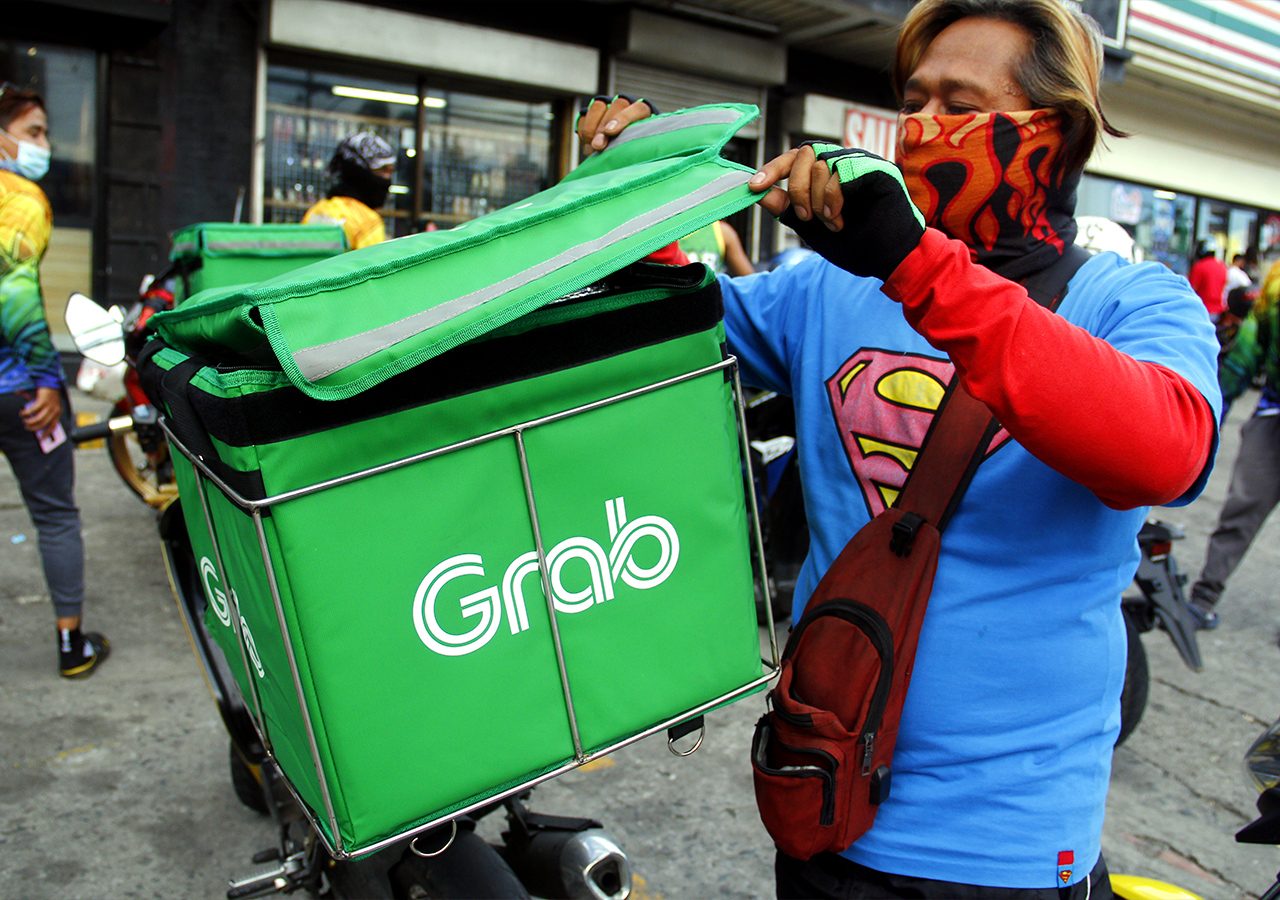SUMMARY
This is AI generated summarization, which may have errors. For context, always refer to the full article.

MANILA, Philippines – Consumers in the Philippines and across Southeast Asia now see food and grocery deliveries as part of their life, according to the latest Grab Food and Grocery Trends report.
While deliveries served as a necessity during pandemic lockdowns, demand for the services never dropped even after restrictions eased. Grab reported that as many as 7 in 10 consumers now see deliveries as a permanent part of their post-pandemic life.
“The report clearly indicates how the pandemic has paved the way for the paradigm shift in the food and delivery service industry, especially here in the Philippines,” said Anton Bautista, Grab Philippines head of deliveries and business development.
Here are some key takeaways from the report:
- Filipinos are spending more for deliveries. Not only are they ordering more, but they’re also spending more per order, with the average order growing by 84% from 2019 to 2022. Consumers say they prefer deliveries because of their convenience and their ability to access what they want on-demand.
- The biggest users are young families. More than half of those who order food and grocery deliveries multiple times a month are young couples with kids. Those ordering food say they’re satisfying cravings, treating their families, or are too busy to cook. Those buying groceries do it for special promotions, as quick fixes during occasions, or to try new products.
- Filipinos use delivery platforms to find new food. Across Southeast Asia, 88% of consumers found new stores because of delivery apps. Nine out of 10 consumers have ordered deliveries from a new store that they haven’t visited in person. Consumers also spend about 17 minutes searching for food through the Grab platform before placing an order.
- Businesses need deliveries to survive. Eight out of 10 merchants say that they now rely on delivery platforms for their business to survive. They also report that their sales revenues have jumped 15% after partnering with food delivery platforms.
Here’s how Filipinos enjoy their food:
- Filipinos love their fried chicken. Fried chicken tops the list of most ordered food on Grab, with almost 55,000 orders of fried chicken made a day. Burgers, pasta, ice cream, and coffee are also popular.
- Filipino food? Not so much. In the Philippines, the top five most-searched cuisines include Korean, Japanese, Chinese, Thai, and Indian. Filipino cuisine is notably absent. In fact, the Philippines is the only country in Southeast Asia where local food isn’t a top trending order.
- Snacking is a group activity. Gone are the days when one would sneak in snacks for solo munching. As workplaces reopen, 74% of consumers say they order snacks for more than one person. Two in five Filipinos also say that they snack at least once a day.
- Halo-halo and carbonated drinks are meryenda favorites. Halo-halo is the most ordered food for meryenda (snack), particularly surging in popularity by 80% in 2022 compared to 2021. Other top snacks include ice cream, pita, milk tea, and caramel macchiato.
- Food matters for weekend get-togethers. Across Southeast Asia, Filipinos order the most big food deliveries to their homes during the weekends. Large-sized weekend orders to residential areas grew five times between 2020 and 2022. The food ordered tended to be bundle or combo meals, sharing platters, and finger foods.
Here are key trends for businesses to follow:
- It’s time to serve healthy. Healthy and plant-based is the new in, as 92% of Filipinos say they eat at least one healthy meal every two to three days. GrabFood consumers also tend to look for healthier meals during lunch compared to other times of the day.
- Customization boosts sales. Grab finds that customers spend more when they can customize their orders. Merchants see a 15% increase in their sales per order when they allow customization. The customizations that matter the most to Filipinos are sugar level, spiciness level, sauce, condiments, and toppings.
- Delivery subscriptions are in. One in three food delivery users are subscribed to a delivery subscription plan. Those subscribers are 44% more likely to order more often and spend 18% more per order compared to non-subscribers.
- Add-ons help you and the customer. Add-ons can help customers reach their minimum spend for promos and free deliveries. Because of that, one in four consumers say that they’d switch restaurants if they couldn’t reach their minimum. Top add-ons include snacks, desserts, and drinks.
“Deliveries continue to be a prominent part of consumers’ lives. In fact, consumers are shifting more and more of their food journey online, which presents additional opportunities for brands to reach and engage consumers online,” said Sean Goh, regional head of mobility and deliveries.
The report combined survey insights from over 60,000 food and grocery delivery users in Southeast Asia (collected from January to September 2022), as well as data insights from Grab’s platform (collected from January 2019 to June 2022). – Rappler.com
Add a comment
How does this make you feel?
There are no comments yet. Add your comment to start the conversation.